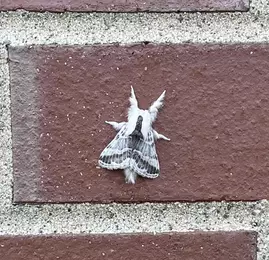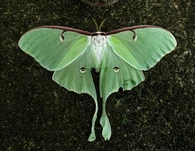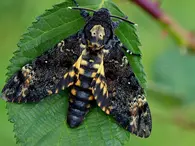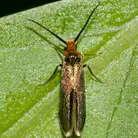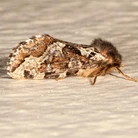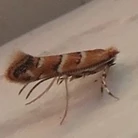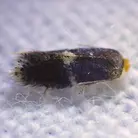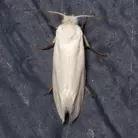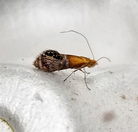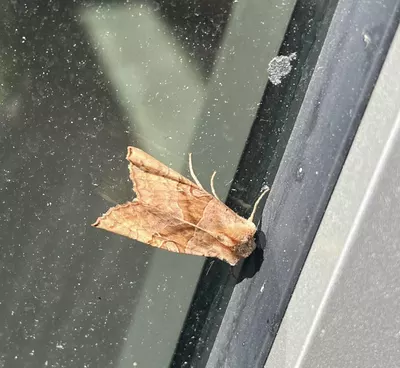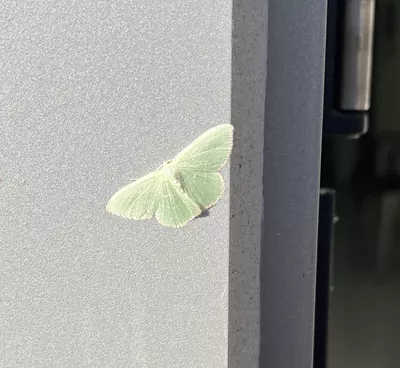The first step to identifying a moth is veryifying that this winged bug is, in fact, a moth.
As a general rule, most moths have feathered antennae, and wings that lie flat when still. They are also mostly active at night.
If an insect you're trying to identify doesn't fit these criteria, it may be a butterfly.
There are a few key traits to look for when identifying a moth;
color, size, pattern, wing shape, location, and whether or not it is fuzzy.
The more specific you can be, the better your odds of identifying the moth.
If you can describe the appearance of the insect using these terms, you can almost certainly figure out what kind of moth you have.
Take the moth depicted to the left, for example.
I had seen it outside of the Discovery Center and wanted to know what kind it was.
It has a distinct triangular shape, with fluffy legs, and white and brownish patterning.
I also knew it was likely known to be present in Massachussets, as I found it there.
Using this description, I was able to identify it as a Large Tolype Moth.
Upon further research into this moth, I concluded that this one was likely a male due to it's size and color saturation.
Like many moths, adult Tolype Moths do not have mouths. They only eat before they pupate, and after metamorphosis their only drive is to reproduce.
